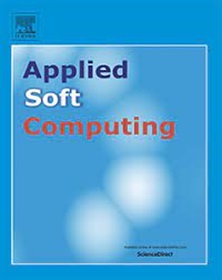Representing online reviews using interval type-2 fuzzy Z-numbers for ranking energy-saving appliances
IF 6.6
1区 计算机科学
Q1 COMPUTER SCIENCE, ARTIFICIAL INTELLIGENCE
引用次数: 0
Abstract
As e-commerce develops and the green consumption concept gains popularity, consumers are increasingly inclined to purchase energy-saving home appliances through e-commerce platforms. However, they often face technical complexities related to specialized energy-saving attributes and an overwhelming number of online reviews. To address these challenges, we have integrated energy-saving features into our online review analysis, incorporating weight calculations. Notably, we propose and prove a method that transforms online review information into interval type-2 fuzzy Z-numbers (IT2FZNs), which comprehensively represent the information to support product ranking. First, based on the energy-saving attributes of energy-saving appliances and their online review data, we extract energy-saving features and online review features, respectively. We then use a combination of TF-IDF-based text mining and BWM-based expert evaluation to determine the weight of each feature. Next, we convert the energy-saving feature data into IT2FZNs according to specific rules. The online review feature data is converted into interval type-2 fuzzy sets (IT2Fs) by considering the sentiment classification results and the accuracy and robustness of the model, and is further combined with the reliability of online reviews to form IT2FZNs. Finally, the alternative products are ranked based on the constructed decision matrix, and the final ranking results are determined. The method's effectiveness and practicality have been demonstrated using real data from energy-saving refrigerators on the JingDong (JD.com) platform, and its robustness and superiority have been further substantiated through comparative experiments.
使用区间2型模糊z数表示在线评论,对节能电器进行排名
随着电子商务的发展和绿色消费理念的普及,消费者越来越倾向于通过电子商务平台购买节能家电。然而,他们经常面临与专业节能属性和大量在线评论相关的技术复杂性。为了应对这些挑战,我们将节能功能集成到我们的在线评论分析中,并结合权重计算。值得注意的是,我们提出并证明了一种将在线评论信息转换为区间2型模糊z数(IT2FZNs)的方法,该方法综合地表示了这些信息,以支持产品排名。首先,基于节能电器的节能属性及其在线评论数据,分别提取节能特征和在线评论特征;然后,我们结合使用基于tf - idf的文本挖掘和基于bwm的专家评估来确定每个特征的权重。接下来,我们根据具体的规则将节能特征数据转换成IT2FZNs。综合考虑情感分类结果和模型的准确性和鲁棒性,将在线评论特征数据转换为区间型-2模糊集(IT2Fs),并进一步与在线评论的可靠性相结合,形成IT2FZNs。最后,根据构建的决策矩阵对备选产品进行排序,并确定最终排序结果。通过京东平台节能冰箱的实际数据验证了该方法的有效性和实用性,并通过对比实验进一步验证了该方法的鲁棒性和优越性。
本文章由计算机程序翻译,如有差异,请以英文原文为准。
求助全文
约1分钟内获得全文
求助全文
来源期刊

Applied Soft Computing
工程技术-计算机:跨学科应用
CiteScore
15.80
自引率
6.90%
发文量
874
审稿时长
10.9 months
期刊介绍:
Applied Soft Computing is an international journal promoting an integrated view of soft computing to solve real life problems.The focus is to publish the highest quality research in application and convergence of the areas of Fuzzy Logic, Neural Networks, Evolutionary Computing, Rough Sets and other similar techniques to address real world complexities.
Applied Soft Computing is a rolling publication: articles are published as soon as the editor-in-chief has accepted them. Therefore, the web site will continuously be updated with new articles and the publication time will be short.
 求助内容:
求助内容: 应助结果提醒方式:
应助结果提醒方式:


